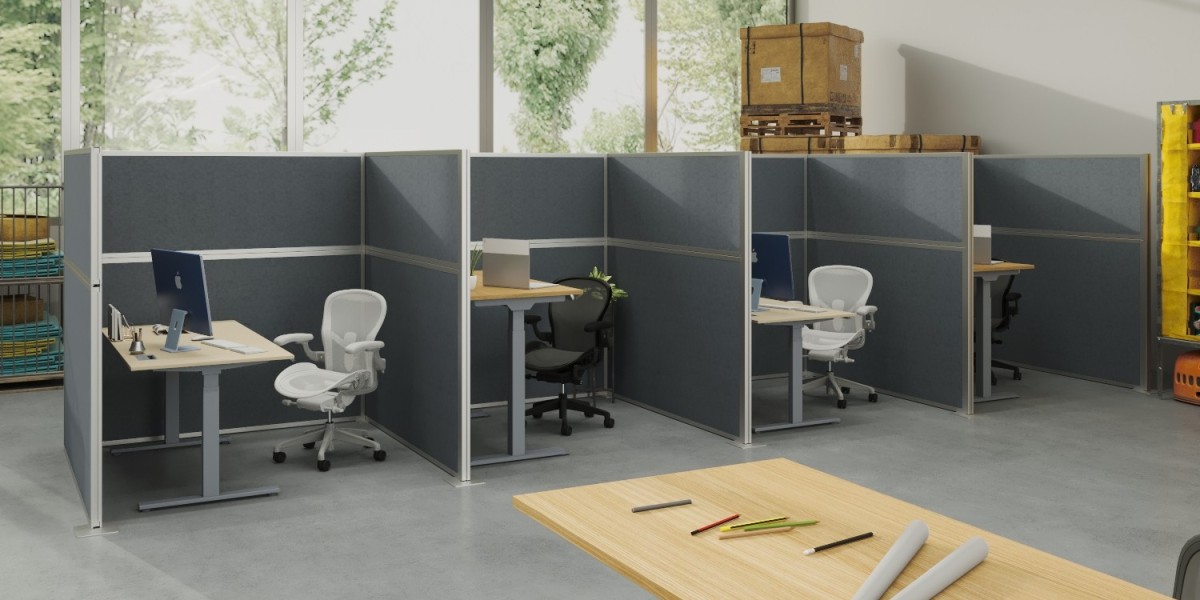The modern office environment has undergone significant changes, with cubicle design at the forefront of this transformation. Today’s cubicles are no longer dull, confined spaces; they are vibrant, innovative, and designed with employee well-being in mind. The future of cubicle design emphasizes adaptability, sustainability, and technology to meet the demands of dynamic workplaces.
Emerging Trends in Cubicle Design
1. Smart Cubicles with Integrated Technology
Smart technology is revolutionizing office spaces. Cubicles equipped with IoT devices are transforming the way employees interact with their work environment. Features like wireless charging stations, adjustable desk heights, and integrated lighting systems are becoming standard. These innovations not only improve convenience but also enhance productivity.
2. Modular and Flexible Designs
Flexibility is a key feature of modern cubicle design. Modular workstations allow businesses to adapt their office layouts quickly. These designs enable seamless reconfiguration for team collaboration or individual focus. This adaptability ensures that the workspace evolves with changing organizational needs.
3. Focus on Privacy Without Isolation
While open office plans have been popular, many employees still value privacy. The latest cubicle designs create personal spaces that provide privacy while maintaining a sense of openness. Acoustic panels, partial dividers, and adjustable barriers strike the perfect balance between collaboration and focus.
4. Biophilic Design Elements
Incorporating natural elements into cubicle design enhances employee well-being and reduces stress. Features like indoor plants, natural wood textures, and increased natural lighting promote a calming atmosphere. Biophilic elements are proven to improve concentration and boost overall productivity.
5. Sustainable Materials and Green Design
Eco-conscious businesses are prioritizing sustainable materials in cubicle design. Recycled metals, bamboo, and low-emission fabrics are increasingly used to create environmentally friendly workstations. These materials not only reduce the environmental footprint but also align with the values of socially responsible organizations.
6. Personalization and Employee-Centric Designs
Allowing employees to personalize their cubicles fosters a sense of ownership and creativity. From adjustable shelves to customizable color schemes, modern designs cater to individual preferences. This approach boosts morale and creates a more welcoming work environment.
Benefits of Modern Cubicle Design
- Enhanced Productivity: Ergonomic and technology-enhanced workspaces allow employees to work comfortably and efficiently.
- Improved Collaboration: Modular setups encourage teamwork while maintaining personal workspaces.
- Better Well-Being: Biophilic designs and ergonomic features contribute to employee health and happiness.
- Brand Identity: A well-designed office reflects a company’s culture and values, making a positive impression on clients and employees alike.
How to Transition to Future-Ready Cubicles
- Assess Your Needs: Analyze your team’s workflow to determine the best cubicle designs for your office.
- Invest in Technology: Equip workstations with the latest tech features to enhance functionality.
- Focus on Flexibility: Choose modular furniture that can be easily reconfigured as your needs evolve.
- Incorporate Green Elements: Use sustainable materials and add greenery to improve air quality and aesthetics.
- Consult Professionals: Work with office design experts to create a space that aligns with your business goals.
Conclusion
The future of cubicle design is about more than aesthetics; it’s about creating workspaces that promote productivity, innovation, and employee well-being. By adopting trends like modularity, biophilic elements, and smart technology, businesses can design offices that are ready for the future of work.









